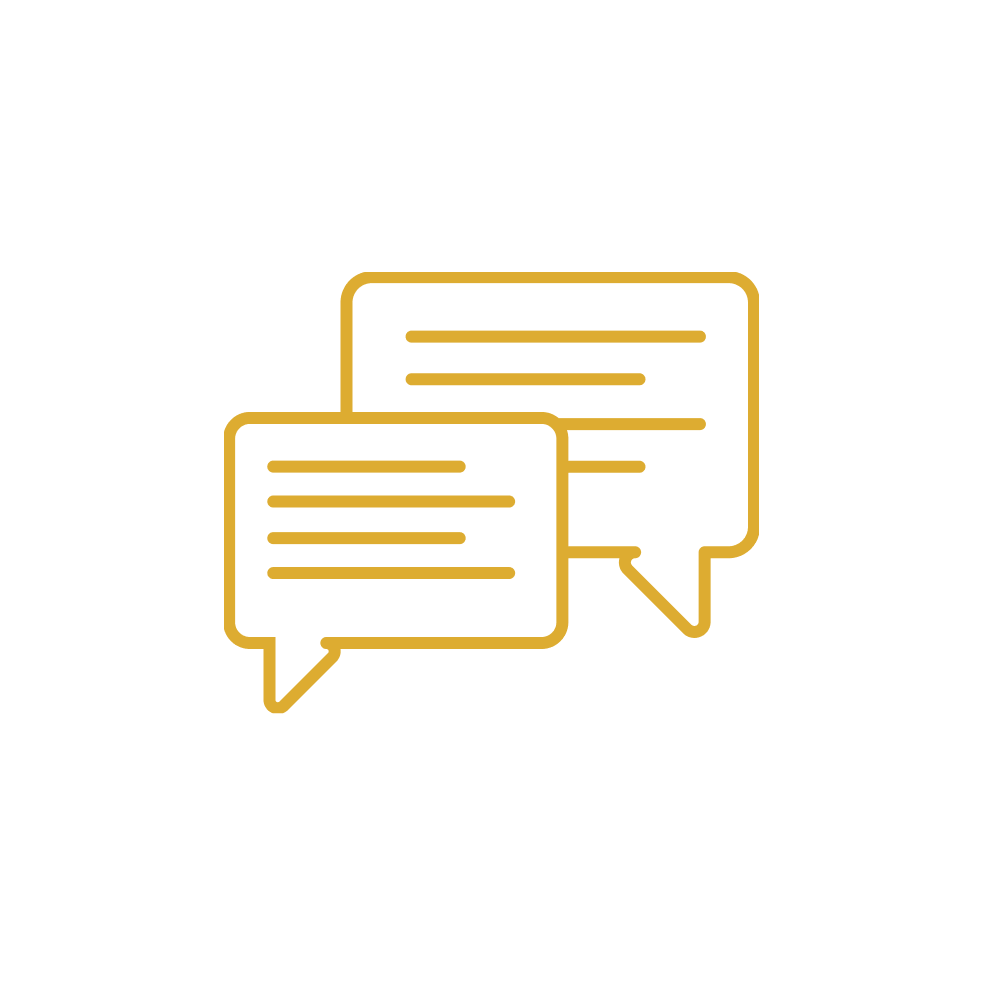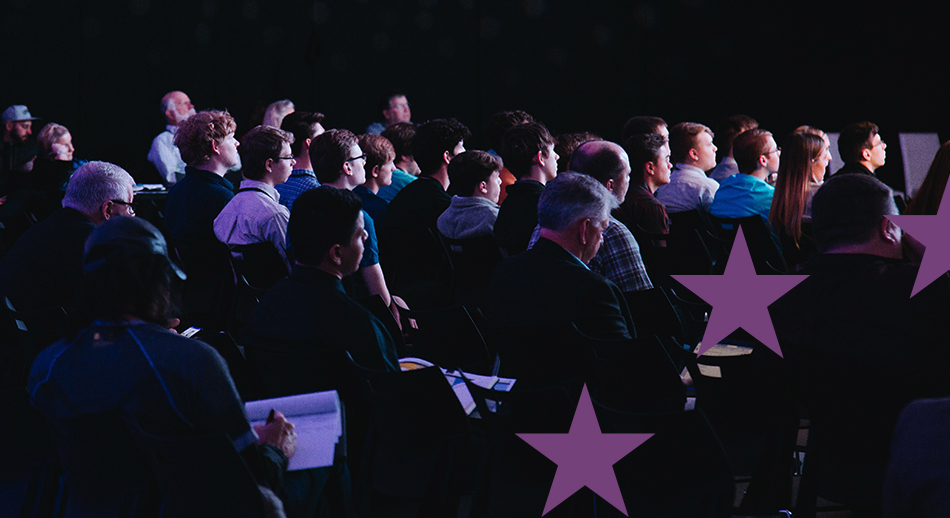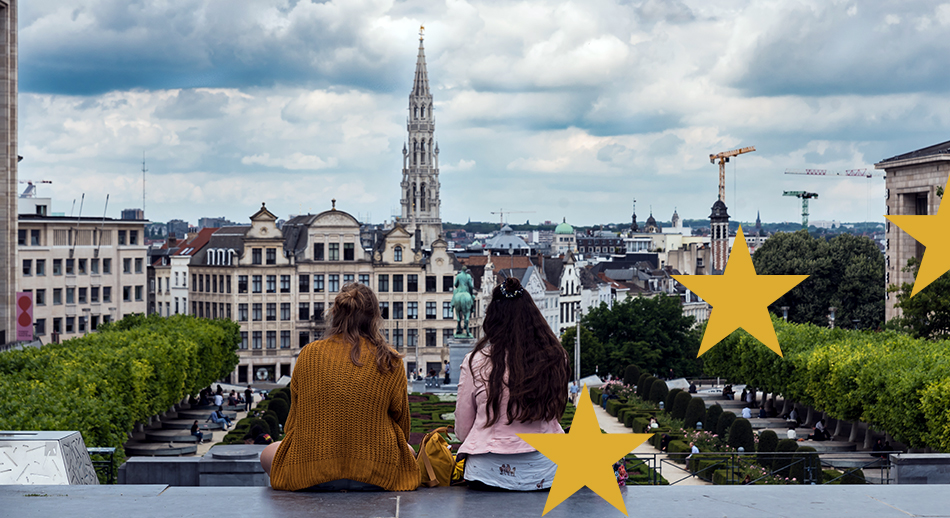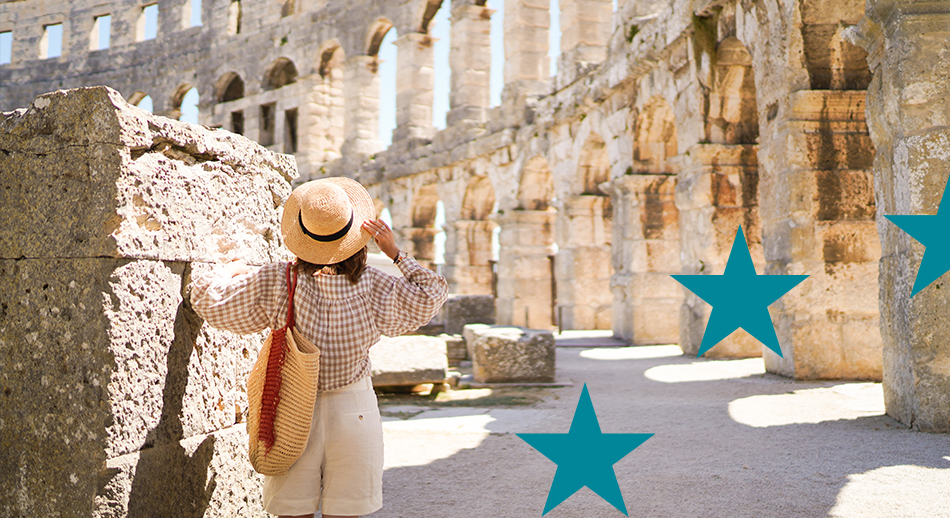Questions and Answers
Answers to frequently asked questions and doubts about European projects

Getting to know the guide
Is the Guide free?
Yes, the Guide to EU Projects and Funding is a free platform: everyone can access it, retrieve materials, ask questions, and participate in initiatives.
Do I need to have any background knowledge to read the Guide?
To the extent possible, the Guide to EU Projects and Funding adopts simple and clear language that does not require any special basic skills.
For those who are approaching the topics covered for the first time, we recommend that you start reading the Handbook first by following the order of the chapters.
Can I download the Guide materials?
The Guide is open to all and always online.
We recommend browsing it online from this site: it is the most comprehensive reading experience that allows you to delve deeper into topics through internal and external links. The platform is designed for effective readability from any type of device.
If it makes for easier reading, the chapters and articles in the Guide can be easily printed, either in hard copy or pdf form. On each page there is a bar for sharing materials, which also includes a printer symbol.
Can I use and share the Guide materials?
Yes, under certain conditions.
The Guide materials may be used at will and shared freely in any medium or format, as long as the source is cited and they are not redistributed for commercial purposes or in modified forms.
The referenced license is Creative Commons 4.0 (Attribution – Noncommercial – No Derivative Works): https://creativecommons.org/licenses/by-nc-nd/4.0/
There is a bar on each page for quick sharing of materials through various social networks.
What can I find on the Guide to EU Projects and Funding?
The Guide is organized into three main sections.
1. A Handbook: the basics, structure and method for working on European funds and programs. It is divided into chapters, like a book. It is ideal for those who want to understand in an orderly way how European funds and programs work (part one), for those who want to understand how the different “families” of European funds and programs are organized (part two), and for those who want to delve into the approach, methods and tools for working on European projects (part three).
2. The Programs: a quick access point to program-specific information and links. Each European program and each regionally or nationally managed program is described in a brief fact sheet, which provides a description and distribution of resources. The most significant part of each fact sheet is links that provide direct access to regulations, programming documents, calls for proposals, results, information, and more.
3. The Insights: news, tools, interviews, and resources to go deeper. Tools include a calls page (covering both European, regional, and national programming), a glossary of terms, reviews of interesting sites, platforms, and documents, and a question-and-answer section for quicker access to important information.
Can I contact the Guide staff?
Certainly: the Guide’s staff is available to receive comments, questions, and suggestions from readers: both from experienced users (for specific advice and requests) and from those who are just getting into European projects (for basic questions). This helps us improve and integrate new content into the Guide.In general, we do not provide support for project writing or on purely operational issues: we give priority to questions and proposals that might also be of interest to other users of the Guide.
You can find us on our Contact page, on Facebook and on LinkedIn.
Can I join the Guide to EU Projects and Funding?
The Guide Partnership consists of foundations and related organizations. We are open to considering new partners, particularly 1) foundations and related organizations and 2) partners who can enrich the Guide’s content with new proposals, or promote its use among specific categories of potential beneficiaries (e.g., universities, master’s programs, training centers, third sector organizations and associations).
You can find us on the About Us and Contact Us pages.
Why do you write the Guide to EU Projects and Funding?
The Foundations and the Guide’s current partner organizations work by statute for local organisations’ development. They share a vision: that of playing a “bridging” role between the local and international dimensions, creating networks and connections between projects and resources.
European funds are an extraordinary lever for renewing the country and building a more sustainable future-a challenge and a great opportunity, to which the Guide’s partners respond by providing a free, innovative tool open to all.
What are Guide partners doing to promote European projects in their local organisations?
In parallel with the Guide, and using the Guide as a working and awareness-raising tool, partner Foundations are intervening in their respective local organisations with a number of interesting initiatives: SfidEuropee (Northeast)Attrazione Risorse (Cuneo)Atelier di EU projects and funding (Perugia) Sportello Europa (Florence, Arezzo and Grosseto) BEEurope and Cofinancing EU Projects and Funding (Lombardia, Novara and VCO).
Working on projects
Who can I turn to for support, inspiration and information for my projects?
There are many answers to this question. We have discussed them in a separate chapter in our Handbook: read it here
We propose a few:1. Specific support initiatives in your local organisations. See here the initiatives organized by the Guide’s partners;2. National contact points, which provide support on many European programs. Find out here what they are and who to contact;3. Organizations-umbrella organizations that are active at the European level in a wide variety of areas, useful for learning about opportunities and partners. Find out here what they are and how to contact them;4. Liaison points between institutions and citizens: EuropeDirect, EEN, European Parliament, European Commission, ItalRap;5. Agencies, Directorates General, and Commission officials (with due care and caution). Find out how and by what means here;6. EU project designers and dedicated companies. Find out here when and how they can be useful.
Where can I find useful insights, sources, and platforms to get updated on European projects?
There are many ways to keep informed and up-to-date. Each sector has its own peculiarities and target organizations; each organization has its own networks, goals, and approaches. We have discussed this in a separate chapter in our Handbook: read it here
Our Guide proposes various tools and possibilities, including in particular:1. a special section to discover and deepen (through direct links to official sources) everything about the individual Programs;2. a Calls for Proposals page that collects the main opportunities, directly from the official Funding&Tenders and OpenCoesione channels;3. a regular proposal of News updates and in-depth analysis, summarized in a monthly Newsletter;4. an Audio and Video section and an article dedicated to the main events and sources of “live” and video updates;5. a Guides and Tools section, which offers other sources of information that you can follow regularly.
Where can I find partners and examples to start from for my projects?
Good partners and good inspiration can be discovered almost anywhere, yet it is not easy to find the right ones.
Whatever your sector, keep in touch with the main networks, associations and organizations that are most active and representative in the field in which you operate.Commit to developing exchanges and contacts with related organizations active in your local organisations and in Europe.Participation in a regional, national or (why not?) European network can open the way to a huge number of opportunities.Use appropriate platforms for partner search and analysis of projects already implemented.
Read more in thefull article.
We also discussed this in special chapter in our Handbook.
What is so special about European projects?
The Guide to EU Projects and Funding explains and provides tools for working on the design, drafting, submission and management of projects in response to a call issued under a European program or fund.
European projects have many similarities with other types of planning carried out locally and internationally, but they follow specific rules derived from the institutional structure and policies of the European Union, and from a set of practices and practices that have accumulated and evolved over the decades. They provide for a “taxonomy” of funds and programs that evolves regularly (in particular, with each seven-year programming period), to which are associated specific regulations, reference policies, programming documents and responsible institutions. They provide for specific preparation, management and reporting procedures, as well as tools and support systems for those who intend to submit the project.
The Guide to EU Projects and Funding aims to explain, promote, and make more accessible this information, these ways of working, and these tools.
How to approach European funds? Are European projects "for me"?
Approaching European projects requires a “European vision,” a good knowledge of the relevant sector, the ability to gather and organize information, a propensity to create links and partnerships, rigor and innovativeness… and many more. Our Guide provides the basics, access to the most important information, examples, updates, and best practices, and the tools to go deeper and get started in the world of European projects.Certain types of calls-and most importantly, an informed and knowledgeable approach to European projects-allow even the smallest organizations to seize this important opportunity.
Find out how by reading the full article.
How to search (and find) European calls for proposals?
This is a priority issue for “insiders.” You need to keep an eye on the most interesting programs in your area of focus, use information from planning documents (e.g., annual or multiyear work programs), and take advantage of the tools made available to promote published and upcoming calls.
Some of the main tools include:
The Calls section of our Guide, CSVnet’s InfoBandi service, and our summary brochures for European Programs, Structural and Rural Funds, and Territorial Cooperation
The official sources, namely the Funding&Tenders portals, OpenCoesione, and the pages of the responsible institutions, which today make it relatively easy and straightforward to search for calls for proposals
To learn more, read the articles on how to search for European calls for proposals and how to keep up to date.
The main information is captured in the dedicated section of the Handbook.
Is it better to wait for the perfect call for your idea or to work out the idea from the call?
The answer to this question lies somewhere between two different approaches.
On the one hand, it is crucial to accurately analyze the criteria provided by a notice and its purpose. On the other hand, the project must be an expression of a felt, well-structured, precise and oriented activity responding to real and meaningful needs.
Read more in the full article.
How to register to participate in a European project?
By now, almost all direct-funding European projects are submitted electronically, particularly through the European Commission’s Funding and Tenders portal.
Read more in the full article.
What are the ingredients for a good project? How are European projects evaluated?
A project that has a good chance of success is first and foremost a project:– laid out simply, clearly and with a well-structured Logical Framework– consistent with the call, with the intentions of the funder, with responding to real and significant needs– solid in terms of partnerships, human and material resources, and the concreteness of the action plan– that can offer “something more,” different or better than what others already do– that convincingly meets the criteria of Relevance, Efficiency, Effectiveness, Impact and Sustainability
But it is also (which is never obvious) a project submitted by the deadline and corrected administratively and procedurally.
To learn more, read the full article and our Handbook.
What are the right questions to come up with a good European project?
Our Guide devotes considerable space to “how to think about” EU projects and funding and attempts to provide an answer to the many questions regarding the field of EU projects and funding.
There are, however, “infrequently asked questions” that we often don’t ask ourselves in dealing with European projects, but which can make all the difference.Principles that become extremely concrete once they are dropped and visualized in the life of our projects.We offer a few, taken from the “Infrequently Asked Questions” of the OpenPM2 Guide
Read more in the full article.
How to manage partnership building and collaboration in European projects?
European projects are large “group works” that require continuous interaction between people, groups and organizations, both in conception and implementation. This interaction allows for broadening the scope and quality of interventions, learning from each other and innovation, but it also represents an element of additional complexity that can generate stress and grounds for potential conflict.
To make this interaction a success factor, various aspects and key issues need to be considered: to analyze and involve partners and other project-related actors in the right way, to understand their forms of interaction, and to associate roles and responsibilities with them.
There is also a need to define and enforce shared rules, formalized in a Consortium Agreement.
Find out all about this in a dedicated article and section.
How do you organize monitoring and evaluation activities on a European project?
One of the main challenges in managing European projects is tracking their progress, use of resources, adherence to timelines, achievement of results and objectives, and-ultimately-achieving impact.
All of this is at the heart of the link between the person who submits a European project and the managing authority that finances it, and it can have considerable weight in the selection (and subsequent management) of European projects.It first requires a good definition of the intervention logic, through a Logical Framework and a dedicated Monitoring and Evaluation Framework, with indicators, sources, ways and means of verification, baselines and targets, timelines and responsibilities.The activity continues in the project management phase through appropriate tools and methods of analysis, data collection and processing. It takes on a strategic and “final balance” value at the time when the “impact” of the project is to be defined and measured.
Find out how it works in theappropriate section.
How does reporting work in European projects?
Reporting is one of the concepts most frequently associated with the world of European projects. It consists of financial reporting for the project, but is closely related to all aspects of project life: planning, management, proposal and budget development, execution of activities, partner relations, and various administrative activities (employee, consultant, and vendor documentation, proof of payment, document filing, and accounting).This is an important and necessary activity to obtain the disbursement of European funds.
Find out how it works in theappropriate section.
Where should one start in developing a design proposal?
Establishing a good design idea is of paramount importance for the subsequent development of the project.
It requires:– a preliminary activity of analysis of the context, the needs to which it is intended to respond, the intentions of those funding it, what has already been done in the same area, and the human and material resources available;– a clear approach in identifying objectives, results and factors that could condition the outcome (logical framework)– a perfect knowledge of the call for proposals, the reference forms, the formal and administrative criteria for participation, and what is needed in terms of time and resources;– an activity of exchange and association with other organizations, to form a partnership carrying ideas, approaches, capacities, resources and territorial scalability.
Learn all about this in four successive chapters on preparation, approach, project structuring, and examples and insights.
What is inside a call for proposals and inside a project proposal?
The structure of the calls and proposals changes depending on the type of program (regionally, nationally, or centrally managed) and the specifics of individual programs.There are usually guidelines, forms and templates (for proposal and budget), guidance and annexes of a practical (e.g., budget, evaluation, and deadlines) and administrative (e.g., procedures and eligibility) nature.
The same variability applies to the contents of project proposals, which generally require elements to prove eligibility and capacity of lead and partners, a technical proposal (needs and context, approach, action plan and project team) and a budget.
Find out the details in theappropriate section.
What are the important aspects to consider when writing a project?
Writing a project requires:– a careful reading of the call for proposals, to check its correspondence with objectives, guidelines, type of activities and eligibility criteria– a good analysis of the context, problems to be addressed, existing actors and initiatives– a clear formulation of objectives and results, a timetable and the consolidation of the partnership– an overview and moments of joint verification, on aspects of innovativeness and effectiveness, relevance and feasibility– a willingness and ability to write clearly, simply and effectively, to go deeper and to improve.
Discover a more comprehensive discussion in theappropriate section.
How to keep abreast of events of European significance?
Every year, major “European days” and “European weeks” are organized to meet officials in charge of developing European policies and programs, organizations from all countries, possible partners, testimonials, and bearers of successful ideas. We have collected the dates of the main events in one “calendar” – there really is something for everyone.
To these events, specific “infodays” organized periodically by the various institutions at the time of launching specific programs, work plans and important calls should be added.
The main sources for keeping up to date are:– The European Commission’s events page (the events and workshops organized day by day);– The European Commission’s streaming service (access to “live” recordings of major events);– The dedicated pages of European programs, executive agencies and national contact points (for infodays).
Find out all the details here. More information also in our Handbook.
PROJECT PROFESSION
What does it mean to be an "EU project designer"?
An EU project designer is distinguished from other professionals by his or her knowledge of the funding sources and project management procedures specific to the European Union and its related institutions.However, EU project designers are not a “one-size-fits-all” category, and work on EU projects is by nature varied and involves different “nuances” (and skills).
When and how is an EU project designer useful?
The support of a specialist in the field, i.e., an “EU project designer,” can be an advantage in preparing a project, but many factors must be taken into account, including the type of project, the type of organization, and how the organization approaches the development of the project proposal. Even with an “EU project designer,” the proposing organization must provide commitment and vision.
How to choose a europlanning course?
We prefer not to recommend specific europlanning courses, knowing that there is a very wide and differentiated supply of them in terms of thematic and sectoral coverage.
We can recommend some important criteria: the “curriculum” of the organization, the stated thematic scope, the presence of moments of practical application, the operational skills of the teachers, and the level of depth.
To learn more, read thefull article.Learn more about the Guide’s partner support initiatives here.
How to become an EU project designer?
There is no one way to specialize in the area of European projects. There are as many possible backgrounds and experiences as there are people who call themselves “Europrojectors.”
Generally speaking, we consider it important to:– “cultivate” knowledge, experience and relationships in an area, train and keep oneself ready and up-to-date;– experience practical work on projects gradually, with shadowing and then with increasing autonomy;– develop and strengthen soft skills of drafting, analysis, reporting, organization and use of IT tools.
Read the full article with our suggestions.
How and when can an EU project designer contact EU officials directly?
In some cases it may be useful or necessary to be able to contact the EU officials who follow the execution of European programs and projects.There are specific and very effective tools for this, such as a directory, switchboard and pages dedicated to the different organizational structures of the European Commission.However, attention must be paid to the who, when, how and why: to avoid inappropriate, counterproductive or contrary contacts.
How do you "lobby" in the context of European projects?
“Lobbying” in European projects (also known as “advocacy,” with a different nuance of meaning) is a much “nobler” and richer concept than one might think: indeed, it is a necessity of community institutions, which welcome and listen with interest to civil society’s contributions to European policies-which are reflected in the programming of community projects.
It is also a much less “complicated” concept than one might think because there are so many representative organizations of civil society to refer to.
POLICIES AND INSTITUTIONS
By whom and how is the community budget defined?
The question is complex, because the “community budget” includes various aspects, each governed by its own particular definition and approval procedures. It is an important question, because funds and programs used in European planning directly descend from these procedures.
The decision-making and budgetary aspects that have an impact on the resources of European funds and programs concern in particular:– the resources available for the seven-year period;- the seven-year organization of resources (Multi-year Financial Framework);– the annual budget of the Union;– the regulations of European funds and programs (with priorities and their allocations).
How long does "old" programming remain valid and when does new programming begin?
At the beginning of each program period, the old programs are exhausted, while new ones are gradually started.
Programs from the “old” period remain topical for some time.
On Structural Funds, the so-called “n+3” rule applies: activities can be financed on projects until the third year following the end of the programming period.The timeframe is normally shorter for directly managed European programs.
Read more in the full article.
How much EU funding will Italy be eligible for in this programming period?
A frequent question and not so simple. The answer depends on several factors, parameters, and estimates that can be considered in the count.We have provided an indicative estimate of 350 billion, with an explanation of the parameters considered, based on which this estimate may vary.This Guide aims to support organizations in our country to effectively exploit this potential, through projects.
Find out the details in thededicated article.
Recovery fund: why is it important and what changes?
NGEU, Next Generation EU, the Recovery and Resilience Instrument (or Program) or (as it is more often abbreviated) the Recovery Fund is an exceptional opportunity for our country.
This is a unique and disruptive tool for several reasons:– for the amount of funds made available (especially to Italy), at a time of crisis and to be used in a few years;– for the sense of solidarity between EU countries and for the experimentation with a form of “Eurobond” (by which a “European public debt” was created);– for the introduction of criteria and structures for managing and monitoring funds coordinated on several levels (EU and various national authorities).
Read the full article for more details.
What is the absorption capacity of EU funds?
Fund absorption capacity indicates the ability to “make good use of funds.” It measures purely quantitative aspects, of use of funds, and can be applied in various ways:– how much of the initially planned funds are programmed for specific use;– how much of these funds are allocated to recipients for project implementation;– how much of these funds are actually spent on activities carried out.
According to comparative figures provided by CohesionData, Italy normally ranks in the bottom ranks in terms of fund utilization, i.e., absorption capacity.This means that Italian institutions are less effective in managing funds, in operational and administrative terms, producing a loss of opportunities and resources.
Read more in the full article.
Is there a common framework of targets and indicators defined by the international community?
Yes, it exists and refers to the so-called SDGs, or Sustainable Development Goals.There are 17 objectives, broken down into 169 “goals” , each related to its own system of indicators.
They have been embraced by all those involved in “development” in a broad sense: development cooperation, but also development of their own communities, economic and social development, and environmental sustainability.As broad as their horizon is (even global), an alignment (and a small, or very small contribution) of our projects towards this common endeavor can be useful.Such an alignment can also enable them to make the results of their projects more “communicable” (through a common language).
Read more in the full article.
What are the priorities of the current programming period?
The main strategic aspects of the current programming period (2021-2027) were defined by the European Commission under the chairmanship of Ursula von der Leyen (2019-2024).
Six priorities have been identified. Some are specifically associated with particular EU programs, but all are relevant in some way, across the board, to all European programs and projects:Europe’s “Green Deal” | A Europe Ready for the Digital Age | An Economy Serving People | A Stronger Europe in the World | Promoting the European “Way of Life” | New Momentum for European Democracy.
To these are added (without departing too far from them) specific priorities related to Regional Policy and the Structural Funds:A more competitive and “smarter” Europe | A “greener” and low-carbon Europe | A more connected Europe | A more “social” and inclusive Europe | A Europe closer to citizens | Better governance of cooperation | A safer Europe.
Read the full article here.
How much does Europe cost?
The European Union “costs little”: its budget is about 15 percent of that of the Italian state, while covering a population almost 8 times larger.
Spending per inhabitant of the European Union is derisory compared to other administrations and administrative spending very low (7 percent) compared to total spending…which is overwhelmingly committed to European funds and programs.
Against this (all in all modest) expenditure, the “cost of non-Europe” is much higher. The ECB has estimated the impact of the “only” Single Market at 12-22% of European GDP per capita, without considering other factors and other effects on citizens (security, innovation, rights, mobility…).
Read the full article here.









